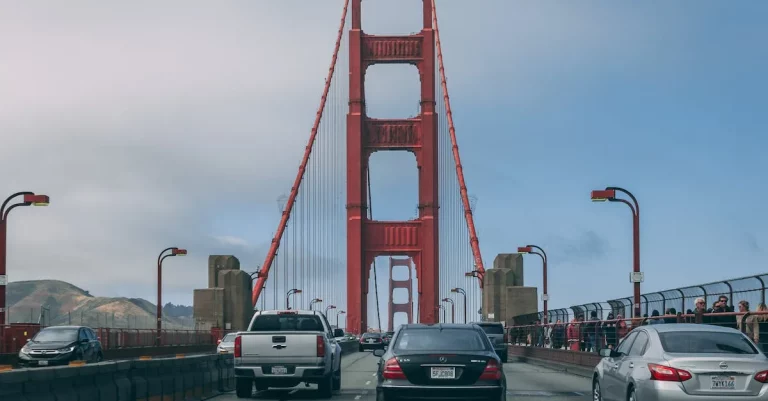Registering A Trailer In California With No Paperwork: The Complete Guide
If you recently acquired a trailer in California but don’t have any paperwork for it, you may be wondering how to properly register it. Getting a trailer registered and legal for the roads is important for compliance and safety.
If you’re short on time, here’s a quick answer to your question: You can register a trailer in California with no paperwork by applying for a one-trip permit, submitting a statement in lieu of title, and working with the DMV to obtain a new title and registration. This process may take some time.
In this comprehensive guide, we’ll cover the step-by-step process for registering a trailer in California when you don’t have any previous ownership documents or title. You’ll learn what forms and fees are required, how to get a VIN inspection, tips for communicating with the DMV, and more. With the right information and paperwork, you’ll be able to legally register your undocumented trailer in California.
Let’s dive into the various steps and requirements for successfully registering a trailer with no paperwork so you can meet all California vehicle compliance laws.
Determining the Steps You Need
Registering a trailer in California without any paperwork can be a daunting task, but with the right information, it can be a smooth process. Before you begin, it’s important to determine the specific steps you need to take based on your situation. Here are three key factors to consider:
View this post on Instagram
Is it a homebuilt trailer?
If your trailer is homebuilt, meaning it was constructed by you or someone else and does not have a manufacturer’s certificate of origin, you’ll need to follow a different set of steps compared to trailers with existing paperwork.
The process for registering a homebuilt trailer typically involves obtaining a Vehicle Identification Number (VIN) and completing a Statement of Construction form. You may also need to provide documentation such as receipts for materials used and photos of the construction process.
Weight and size requirements
California has specific weight and size requirements for trailers that determine the type of registration you need. If your trailer exceeds these limits, you may need to obtain a special permit or register it as a commercial trailer.
It’s important to check the California Department of Motor Vehicles (DMV) website for the most up-to-date information on weight and size requirements to ensure compliance.
Identifying your situation
Before you begin the registration process, it’s important to identify your specific situation. Are you the original owner of the trailer? Was it previously registered in another state? Do you have any documentation or proof of ownership?
Answering these questions will help determine the necessary steps you need to take. If you don’t have any paperwork or proof of ownership, you may need to apply for a bond or conduct a lien sale in order to obtain the necessary documentation for registration.
It’s worth noting that the registration process for trailers without paperwork can vary depending on the specific circumstances. It’s always a good idea to consult the official California DMV website or visit a local DMV office for the most accurate and up-to-date information.
Getting a Single-Trip Transportation Permit
Using the permit
If you need to transport a trailer in California without proper paperwork, obtaining a Single-Trip Transportation Permit is a viable solution. This permit allows you to legally move your trailer from one location to another within the state.
It is important to note that this permit is only valid for a single trip and cannot be used for repeated trips. Once you have obtained the permit, you must follow the designated route and adhere to any restrictions or regulations specified.
Permit fees
When applying for a Single-Trip Transportation Permit in California, there are certain fees associated with the process. The cost of the permit may vary depending on the weight and size of your trailer. It is advisable to contact the California Department of Motor Vehicles (DMV) or visit their official website for the most up-to-date fee information.
Keep in mind that these fees are subject to change, so it is essential to stay informed.
Expiration
Single-Trip Transportation Permits in California have an expiration date. It is crucial to be aware of this date and plan your trip accordingly. Typically, these permits are valid for a specific period, such as 10 or 15 days, allowing you ample time to transport your trailer to its intended destination.
However, if the permit expires before your trip is completed, you will need to obtain a new permit to continue your journey legally. Be sure to check the expiration date on your permit and make necessary arrangements to avoid any legal complications.
View this post on Instagram
Completing a Statement in Lieu of Title
If you find yourself in the situation of needing to register a trailer in California without any paperwork, completing a Statement in Lieu of Title is a viable option. This document serves as a substitute for the title and provides proof of ownership.
It is important to carefully follow the steps outlined below to ensure a smooth and successful registration process.
Filling out the statement
The first step in completing a Statement in Lieu of Title is to download the form from the official website of the California Department of Motor Vehicles (DMV). The form requires you to provide detailed information about the trailer, such as its make, model, vehicle identification number (VIN), and any other relevant details.
It is crucial to provide accurate and up-to-date information to avoid any delays or complications.
Providing proof of ownership
In order to register a trailer without paperwork, you’ll need to provide proof of ownership. This can be done by providing any supporting documents that demonstrate your ownership, such as a bill of sale, a notarized statement from the previous owner, or any other documentation that establishes your right to the trailer.
It is recommended to consult with the DMV or a legal professional to determine which documents are acceptable in your specific situation.
Submitting to the DMV
Once you have completed the Statement in Lieu of Title and gathered all the necessary supporting documents, it’s time to submit them to the DMV. You can either mail the documents or visit a local DMV office in person.
It’s important to double-check that you have included all the required paperwork and fees before submitting. The DMV will review your application and, if everything is in order, issue a new title and registration for the trailer.
Conducting a VIN Inspection
Making an appointment
Before you can register a trailer in California without paperwork, you will need to have a VIN inspection conducted. To make an appointment for a VIN inspection, you can contact your local DMV office or use the online appointment system if available.
It is recommended to book an appointment in advance to avoid long wait times.
Bringing your trailer
When you go for the VIN inspection appointment, make sure to bring your trailer along with all the necessary documents. These documents may include the current registration, bill of sale, or any other proof of ownership.
Additionally, it is important to have a valid form of identification, such as a driver’s license or identification card.
Inspection process
During the VIN inspection, a DMV representative will examine the trailer to verify its identity and ensure it meets the necessary safety standards. They will check the Vehicle Identification Number (VIN) to ensure it matches the documentation provided.
They may also inspect the trailer’s lights, tires, brakes, and other components to ensure they are in proper working order.
It’s important to note that the specific requirements for the VIN inspection process may vary depending on the type and size of the trailer.
By following these steps and completing the VIN inspection, you will be one step closer to registering your trailer in California without paperwork. It is always recommended to check the latest guidelines and requirements provided by the DMV to ensure a smooth and hassle-free registration process.
View this post on Instagram
Obtaining a Title and Registration from the DMV
When it comes to registering a trailer in California without any paperwork, the first step is to obtain a title and registration from the Department of Motor Vehicles (DMV). This process may seem daunting, but with the right information, it can be a straightforward process.
Here is a complete guide to help you navigate through the steps.
Title Application
The first step in obtaining a title for your trailer is to complete a title application. You can download the application form from the official DMV website or visit your local DMV office to pick up a copy.
The application will require you to provide information such as the make, model, year, and vehicle identification number (VIN) of your trailer. You may also need to provide proof of ownership, such as a bill of sale or a notarized statement of facts.
Pro Tip: It’s always a good idea to double-check the DMV website for the most up-to-date information and requirements.
Registration Application
Once you have obtained the title for your trailer, the next step is to complete a registration application. This application can also be found on the DMV website or obtained from your local office. The registration application will ask for information about the owner of the trailer, such as their name, address, and contact details.
You will also need to provide details about the trailer, including the make, model, year, and VIN.
Pro Tip: Make sure to fill out the application accurately and legibly to avoid any delays in the registration process.
Paying Fees
After completing the title and registration applications, you will need to pay the necessary fees. The fees for registering a trailer in California vary depending on factors such as the weight and length of the trailer.
It’s important to note that these fees can change, so it’s best to check the current fee schedule on the DMV website or contact your local DMV office for the most accurate information.
Pro Tip: To save time, you can check if your local DMV office accepts online payments or offers a mail-in option for submitting your fees.
Registering a trailer in California without any paperwork may seem like a daunting task, but by following the steps outlined in this guide and providing the necessary information and fees, you can successfully obtain a title and registration from the DMV.
Remember to always double-check the requirements and fees on the official DMV website or consult with your local DMV office for the most accurate and up-to-date information.
Conclusion
Registering a trailer in California without any paperwork definitely presents some challenges, but is absolutely possible. By following the steps outlined here and working closely with the DMV, you can properly register your trailer.
The key things to remember are getting a one-trip permit, submitting a statement in lieu of title, completing a VIN inspection, and working with the DMV to obtain a title and registration. It also helps to be thorough in providing proof of ownership and communicating clearly with the DMV throughout the process.
With persistence and the right paperwork, you can successfully register your trailer in California even without any previous documentation. Just stay on top of all the requirements and don’t hesitate to ask the DMV for clarification. You’ll be driving your legal, compliant trailer in no time!








